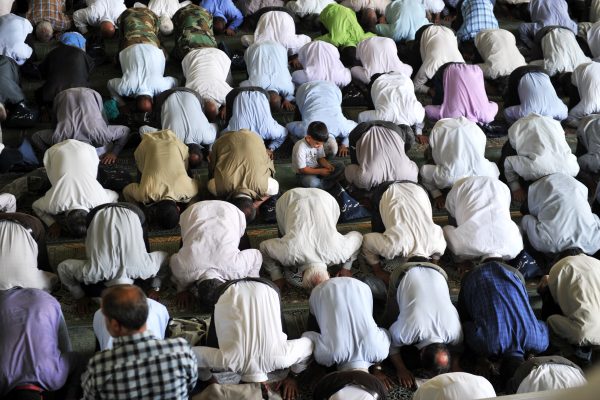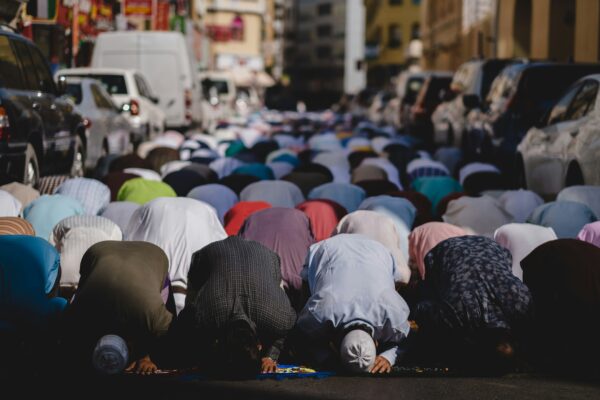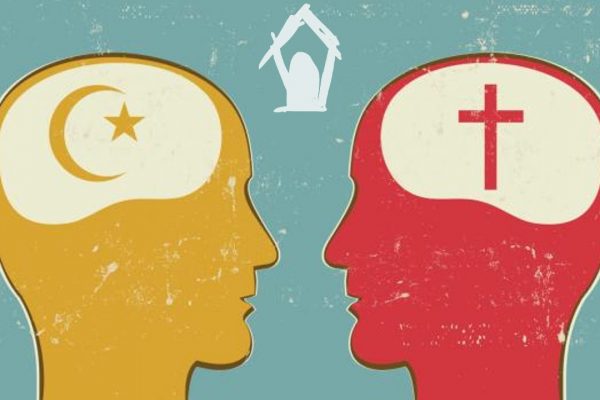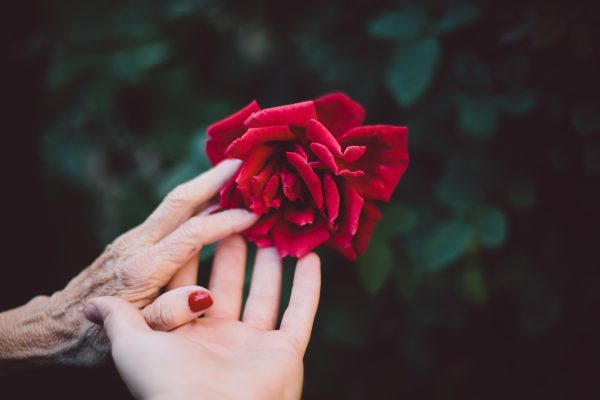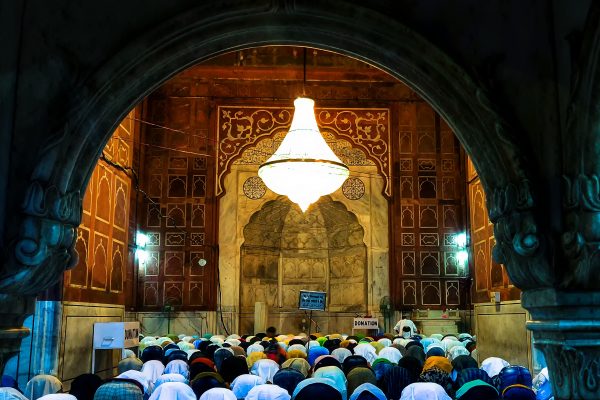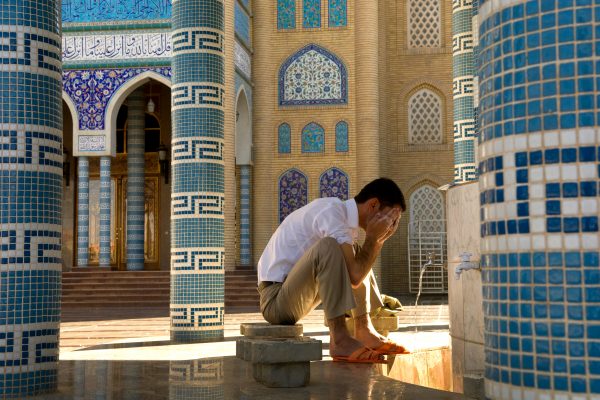When people ask me where I am from I often find myself at a loss for what to say. As a second-generation Italian-Croatian-American former Catholic now convert to Islam who follows the Shia Ithna-Asheri school but frequents the local Sunni mosque, was born in Beirut, Lebanon, raised overseas and lived for years in the cosmopolitan and diverse capitol region of the United States you can understand my lack of a ready response. I feel that diversity is my natural state both with respect to ethnicity and religious experience, and is actually my comfort zone. Indeed, personally I have found the most discomfort and sense of being out of place when I am in an all white homogeneous city, even though I myself am white. Diversity is normal to me and being multi-lingualm I always have a keen ear for the languages I hear around me and enjoy the opportunities to connect with people of various background.
Likewise, with respect to faith I have a comfort and ease with personally engaging with various faiths, visiting other houses of worship, and learning about important rituals and events. This engagement is how I have raised my children as well to create a strong relationship with all of humanity, which as homeschoolers could have been the opposite. Many in the homeschooling community choose to homeschool to practice their religion and promote their worldview to the exclusion of others and can often become isolationists and dogmatic in their approach, leaving their children at a loss of how to engage the other. While practicing our faith and learning about it was central to our homeschool life, my goal wasn’t dogma but identity, and it is that identity that has stayed with them as they have ventured into new learning experiences outside the homeschool environment and learn and socialize with different types of students who do not share our values nor worldview. The professor of Ecumenical Theology, S. Wesley Ariarajah, in his book, “Not Without My Neighbour: Issues in Interfaith Relations”, makes a plea for how critical this engagement is in our volatile world today emphasizing that this reality can’t be ignored. He eloquently notes that diverse communities that are living in close quarters share common visions to mutual problems and ultimately most are, “looking for a just, reconciled, and peaceful world”. Furthermore, he emphasizes that it is now or never that these communities need to “pool their spiritual resources in dealing with them” otherwise we risk isolationism that he equates to opting out of society and only ‘playing’ by our own rules.
Interfaith and working with a multi-faith world is an imperative and the Jaffari school or the Ithna-Asheri school of Islam, this is part of our history. We have a letter written by the first of the twelve Holy Imams, Imam Ali ibn Abi Talib (as) to Malik al-Ashtar on his assuming the governorship of Egypt that states:
“Remember, Malik, that amongst your subjects there are two kinds of people: those who have the same religion as you have; they are brothers to you, and those who have religions other than that of yours, they are human beings like you. Men of either category suffer from the same weaknesses and disabilities that human beings are inclined to, they commit sins, indulge in vices either intentionally or foolishly and unintentionally without realizing the enormity of their deeds. Let your mercy and compassion come to their rescue and help in the same way and to the same extent that you expect Allah to show mercy and forgiveness to you”.
Letter 53, Nahjul Balagha
This worldview underscores our common humanity and our common need for mercy and ultimately for Divine mercy.
Most importantly, this advice flows directly from Quranic verses that underscore the purposeful diversity of humanity and our common source,
“And of His signs is the creation of the heavens and the earth and the diversity of your languages and your colors. Indeed in that are signs for those of knowledge.”
The Holy Quran (30:22)
In the book, “An Enlightening Commentary into the Light of the Holy Quran, Vol. 14” written by various scholars under the direction of Ayatullah Allamah Al-Hajj Sayyid Kamal Faqhih Imani, we see that this verse reveals diversity as a means towards theology, “The difference of races and languages is a way toward theology. This holy verse is a combination of the extroversive and introversive signs. At first, it refers to the divine creation of the heavens and the earth [and then to the purposeful diversity of the human beings]”. The tafsir, or the exegetical explanation, includes amongst other points that this verse creates for the reader a sense of reverence and awe-inspiring awareness of God’s power and greatness through the comparison of the macro to the micro, the heavens to the diversity of human colors and languages.
On a practical level then, with respect to engagement and dialogue, it is naturally fitting that Muslims and Islamic faith institutions should seek such opportunities. From a historical perspective, it is well known and documented that the Holy Imams engaged with, dialogued, and debated people of other faiths, most notably Imam Ali al-Ridha (as), the eighth Imam, who in the court of al-Mamoon, was well known for his eloquent and discerning discussions. The imam met with Sabeans, Zorastrians, Christians, Atheist, and Jews, as well leading scientists and scholars of his time.
On a personal level, I have made a habit of cultivating a comfort in diversity and engaging with people of different faiths. Because my identity as an American with diversity interwoven into my being and my own interest in religious study, I don’t find that the issues of theological, scriptural, liturgical, cultural, and psychological blocks that Ariarajah discusses are issues for me. In his experience, the Christians he has worked with in interfaith worship programs either feel uncomfortable or that they are compromising some aspect of their faith when faced with other traditions and forms of worship that go against their very core Christian beliefs, not to mention the atmosphere of worship may feel chaotic and lacking structure that is inherent in a Christian church service. Perhaps the other faith traditions find it hard to relate to the sterile, structured “parishioners in pews” experience.
Speaking for myself, I can find the place where I can observe and appreciate differences, while also connecting with similar and deeper spiritual truths. I believe God is One, the concept of Tawhid in Islam, and therefore while we as humans observe different religious practices and also create distinctions, all sincere devotion and attempts to please the Almighty are sacred and worthy of respect. What this means to me is that I can sense and share in the sacred core of different faith traditions. Once, when visiting a Greek Orthodox church, the sense of the sacred was so palpable that both my children, my friend, and I commented on it the minute we entered the sanctuary; we looked at each other in astonishment as we literally felt enveloped with sacredness. The Holy Quran alludes to the value and sanctity of the houses of worship, and specifically for the protection of these places:
“For had it not been for Allah’s repelling some men by means of others, cloisters and churches and oratories and mosques, wherein the name of God is oft mentioned, would assuredly have been pulled down.”
The Holy Quran (22:40)
Ariarajah goes on to delineate several key conflicts that have arisen in interfaith worship or events, most notably the issue of syncretism, or the attempted reconciliation or union of different or opposing principles, practices, or parties, as in philosophy or religion. He notes in his book that often the issue of where to draw the line or the struggle even of how to begin engagement is centered around the issue of identity. How do I retain my religious identity in the face of others and their differences in worship, practice, ritual, and belief? Ariarajah’s context is unique too, because the people with whom he is dealing have often left the Hindu tradition and come to their Christian identity in the recent past or within a few generations, so engaging again with what was left for the “truth” seems at odds with the forward momentum. In my context personally this is not an obstacle, but for the immigrant populations I have engaged with and attempted to worship with, maintaining a separate and distinct cultural-religious identity is far more significant than reaching beyond the mosque’s walls.
Even as a convert, and therefore a foreign entity inside the mosque environment, my experience has been one of non-inclusion, being seen with fear or wariness at times. If I were to suggest what my community would need to do first, I would suggest working on expanding their identity as Muslim-Americans, and this process needs time. Once people feel secure, have decent livelihoods, make new social and familial connections in the US, raise children who can relate to their religion, and have a sense of place here, then more work can be done to not only engage the other outside the mosque, but to engage those of diversity within their mosques. Ariarajah notes that no matter where he travelled in his interfaith work, inevitably each ethnic group would establish its own centers of worship around language and cultural lines first noting that it is not, “because they are anti-ecumenical; it is simply an issue of identity.” He even found this to be true when he was in Switzerland and wanted to find a worship service in English; he could choose the Scottish, English, or American version! Even my own mother never liked to go to Catholic mass since she lived in Virginia, and I realized many years later that it was not an issue of lack of faith or disinterest in religion, but that the Irish Catholic church didn’t feel like home to her Croatian blood. People want to feel at home, and until we can create that feeling in a broader sense many people will limit themselves to their comfort zones. Until then, I will continue to enjoy my homes around the world, and strive to bring that comfort and openness and engagement to my children and to my community



